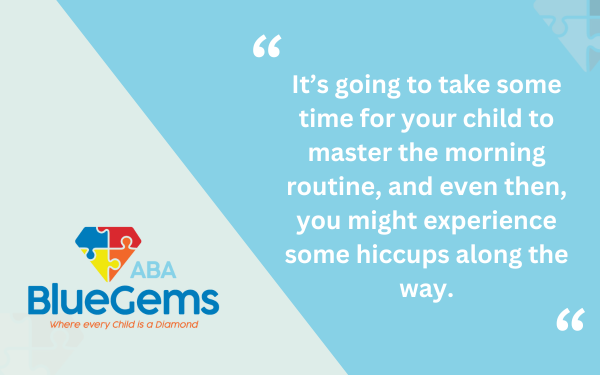Can ABA Help with Following a Morning Routine?
Children with autism spectrum disorder (ASD) often thrive on routines. They are typically most comfortable when they can predict what’s going to happen next, which results in better compliance of requests, better cooperation and overall better behaviors.
Once routines are established, it’s often much easier for parents to accomplish what they have to for themselves and their family, while also tending to the needs of their children with autism.
Setting a new morning routine, looking to establish one for the first time or making changes to one that already exists can all be challenging for children with autism, though. Since all of these scenarios involve new things that will be out of the norm for your child, you might face some hesitation, resistance and bad behavior as a result.
However, applied behavior analysis (ABA therapy) can help introduce a morning routine to your child and then get them settled into it so they can feel comfortable. Here are some ways in which that can be done.
Table Of Contents
Figure Out the Hurdles
As you are designing your family’s morning routine, it’s important to try to predict where the hurdles will be. In other words, what are the most likely challenges your child with autism is going to face, how are they most likely to react and what skills and/or behaviors will they need to display in order to successfully complete the morning routine.
This could include everything from simple tasks such as getting out of bed, getting dressed and brushing teeth, to more complex tasks such as preparing breakfast and packing their backpack.

Once you have all the steps laid out for the morning routine, you can start to prepare for how you can best support your child with autism, following some of the core ABA therapy strategies.
| Step | Description | ABA Techniques Used |
|---|---|---|
| Identify Hurdles | Predict tasks that may cause resistance (e.g., brushing teeth, getting dressed) | Task analysis, behavior prediction |
| Visual Schedule | Use pictures + words to explain tasks clearly | Visual supports, social stories |
| Practice Routine | Start early before a new schedule begins | Repetition, skill-building |
| Use Timers | Show time left for each task | Time management, visual timers |
| Reinforce Success | Celebrate small wins with praise | Positive reinforcement |
Set Up a Visual Schedule
A great tool that you can use for your morning routine is a visual schedule. This can take many forms, but is essentially a step-by-step breakdown of everything that your child will need to do in the morning routine, each of which is accompanied by some visual element.
For example, one section might say “brush your teeth” and be accompanied by a picture of a toothbrush. You could even incorporate elements of social stories by putting a picture of your child brushing their teeth, which could help them relate to the task better.
Children on the autism spectrum are often considered visual thinkers, so pairing visual aids with written explanations of tasks helps them understand what needs to be done and what’s expected of them.
| Task | Visual Aid Example | Support Strategy | Reinforcement Idea |
|---|---|---|---|
| Get out of bed | Image of bed | Gentle prompting | Verbal praise |
| Brush teeth | Child brushing photo | Visual schedule | Sticker reward |
| Get dressed | Clothing icons | Task sequencing | High-five or token |
| Eat breakfast | Picture of food | Practice timing | Small preferred snack |
| Pack backpack | School bag photo | Checklist | Extra screen time |
Practice Makes Perfect
It’s going to take some time for your child to master the morning routine, and even then, you might experience some hiccups along the way.

If you have the ability to do so, try to practice the morning routine before it needs to go fully into effect, as this could reduce some of the pressure and stress on you. In other words, if you are starting a new job in two weeks — or if your children are going back to school in a month following summer break — start to practice the morning routine early so they have time to understand it.
As you practice the morning routine, you can identify some stumbling blocks and introduce different tools to help them complete the task and manage time. For instance, if your child responds well to visual timers, consider incorporating that so they know how much time they have before they need to move onto the next task.
Along the way, ensure that you are using positive reinforcement when your child successfully accomplishes tasks of the morning routine. This could be as simple as extra praise, which will help keep them engaged in the morning routine and motivated to keep exhibiting the behaviors you need them to.
Blue Gems ABA Can Help Set and Establish Morning Routines for Children with ASD
Children on the autism spectrum often thrive on predictable routines. Yet, creating these routines — or making changes to them — can prove challenging.
At Blue Gems ABA, we can help parents set and establish morning routines for their children with ASD. Following the core principles and strategies of ABA therapy, we help children understand the tasks ahead of them, how they’re expected to behave, and keep them motivated to stay on track.
To learn more, please contact us today.




